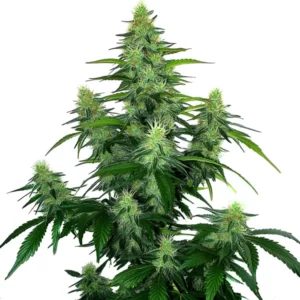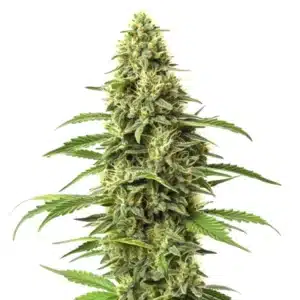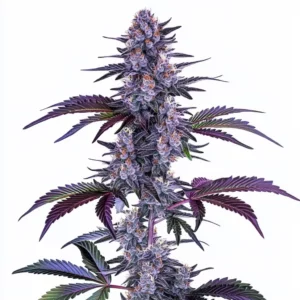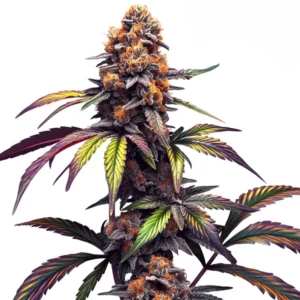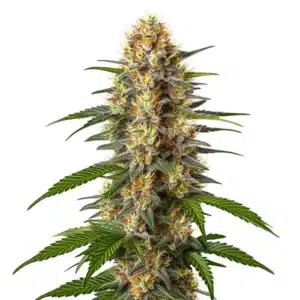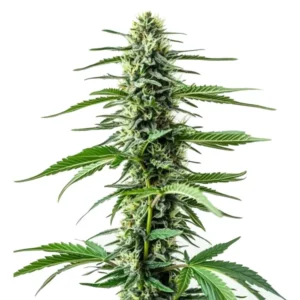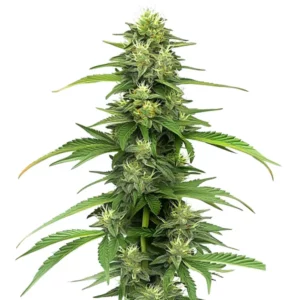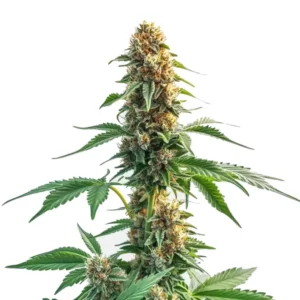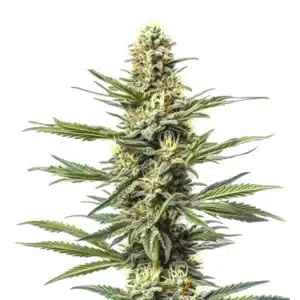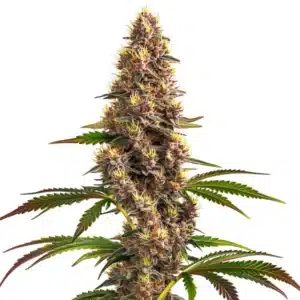What is CBG?
Cannabigerol, commonly known as CBG, is one of the many cannabinoids found in the cannabis plant. Unlike its more famous cousins THC and CBD, CBG is often referred to as the “mother of all cannabinoids” because it serves as a precursor to other cannabinoids. During the growth of the cannabis plant, CBG gets converted into THCA, CBDA, and CBCA, which then become THC, CBD, and CBC when exposed to heat or UV light. The proportion of CBG in mature cannabis plants is usually low, but its potential benefits are gaining increasing attention.
The uniqueness of CBG lies in its non-psychoactive nature and its vast therapeutic potential. Though often overshadowed by other cannabinoids, it’s drawing interest from researchers and cultivators alike. As cultivation techniques advance, strains with higher CBG content are being developed, making it more accessible for those seeking its benefits. It’s a cannabinoid that might not make headlines like THC or CBD, but its subtle power is undeniable.
How CBG Works in the Body
CBG interacts with the body’s endocannabinoid system (ECS), a complex network of receptors and enzymes that help regulate various physiological functions. The ECS contains two primary receptors: CB1, located mainly in the brain and central nervous system, and CB2, found in the immune system and peripheral organs. CBG has a unique way of binding to these receptors, particularly CB2, which is thought to contribute to its anti-inflammatory and analgesic properties.
Moreover, CBG’s interaction with the ECS doesn’t stop at the cannabinoid receptors. It also influences the production of anandamide, a neurotransmitter involved in mood regulation, appetite, and sleep. By inhibiting the uptake of anandamide, CBG may enhance its effects, leading to potential therapeutic applications. Its ability to modulate various receptors makes CBG a versatile cannabinoid with a range of promising benefits, setting it apart from its more well-known counterparts.

Promos & Deals
Health Benefits of CBG
Anti-inflammatory Properties
In the realm of natural remedies, CBG stands out for its anti-inflammatory properties. Inflammation is a common underlying factor in many chronic diseases, and CBG’s ability to mitigate this process may offer relief for those suffering from conditions like arthritis, inflammatory bowel disease, and other inflammatory disorders. Research suggests that CBG reduces inflammation by interacting with the CB2 receptors in the immune system, which helps modulate the body’s inflammatory response.
Furthermore, CBG’s potential to inhibit inflammatory markers such as cytokines adds another layer to its therapeutic potential. By reducing the production of these proteins, CBG may help control inflammation at a cellular level. This capability not only positions CBG as a potential therapeutic agent for inflammatory conditions but also opens up possibilities for its use in skincare products aimed at reducing inflammation-related skin issues.
Pain Relief Potential
Pain relief is another area where CBG shows significant promise. While CBD has been hailed for its analgesic properties, CBG may offer similar, if not enhanced, pain-relieving effects. By interacting with both CB1 and CB2 receptors, CBG can influence pain perception and reduce pain signals in the nervous system. This interaction is particularly beneficial for those suffering from chronic pain conditions, where traditional pain management strategies may fall short.
In addition to its direct effects on pain perception, CBG also contributes to muscle relaxation and nerve calming. Its ability to reduce inflammation further complements its analgesic properties, offering a holistic approach to pain management. For those seeking alternatives to traditional pain relievers, CBG presents a compelling option that combines efficacy with a natural profile.
Medical Applications of CBG
Use in Treatment Protocols
The medical applications of CBG are vast and varied, with ongoing research uncovering new potential uses. CBG has shown promise in treating neurodegenerative diseases such as Huntington’s disease, where it may help protect neurons from damage. Its neuroprotective properties make it a candidate for further investigation in conditions like Parkinson’s and Alzheimer’s disease. The ability of CBG to support brain health could revolutionize treatment protocols for these debilitating conditions.
Moreover, CBG’s antibacterial properties are also being explored in the context of antibiotic-resistant infections. Studies have indicated that CBG can effectively combat bacteria such as MRSA, opening the door to potential new treatments for bacterial infections that are becoming increasingly difficult to treat with traditional antibiotics. As these findings continue to emerge, CBG’s place in medical treatment protocols is becoming more prominent.
Research and Findings
The interest in CBG has spurred a wave of research aimed at understanding its full potential. Preclinical studies have provided insights into its effectiveness in managing glaucoma by reducing intraocular pressure. Additionally, CBG’s ability to inhibit cancer cell growth in certain types of cancer is being closely examined, suggesting that it could play a role in future cancer therapies.
Ongoing research is also evaluating CBG’s impact on appetite stimulation, which could benefit individuals dealing with conditions like cachexia or severe anorexia. As the body of evidence grows, the scientific community is gaining a clearer picture of how CBG can be harnessed to address various health issues. The research landscape for CBG is both dynamic and promising, with new findings continually expanding our understanding of its capabilities.
Comparison with Other Cannabinoids
CBG vs. CBD
When comparing CBG to CBD, several similarities and differences emerge. Both cannabinoids are non-psychoactive and share some overlapping benefits, such as anti-inflammatory and analgesic properties. However, CBG’s unique ability to bind with CB2 receptors gives it an edge in modulating the immune system and reducing inflammation more effectively in some cases.
On the other hand, CBD is often more readily available and has been extensively studied, making it a popular choice for many seeking cannabinoid therapy. Nevertheless, CBG’s potential to enhance anandamide levels and its broader receptor activity suggest that it might offer additional benefits that complement CBD. For those looking to maximize the therapeutic effects of cannabinoids, a combination of CBG and CBD might provide the most comprehensive results.
CBG vs. THC
The comparison between CBG and THC is even more pronounced, given THC’s psychoactive nature. While THC is known for its ability to induce a “high,” CBG does not share this property, making it a more appealing option for those who wish to avoid psychoactive effects. In terms of therapeutic benefits, both cannabinoids offer pain relief, but CBG does so without altering mental clarity.
Additionally, CBG’s interaction with both CB1 and CB2 receptors offers a different mechanism of action compared to THC, which primarily binds to CB1 receptors. This distinction allows CBG to provide therapeutic benefits without the psychoactive effects associated with THC. For individuals seeking the medicinal properties of cannabis without the high, CBG stands out as a viable alternative.

FAQs about cbg benefits
What are the main health benefits of CBG?
CBG is celebrated for its anti-inflammatory, analgesic, and neuroprotective properties. It aids in reducing inflammation, providing pain relief, and potentially protecting neurons from damage, making it a versatile cannabinoid with numerous health benefits.
How does CBG help with inflammation?
CBG helps with inflammation by interacting with CB2 receptors in the immune system, reducing the production of inflammatory markers, and modulating the body’s inflammatory response, thereby offering relief from chronic inflammatory conditions.
Can CBG provide effective pain relief?
Yes, CBG can provide effective pain relief by influencing pain perception through its interaction with CB1 and CB2 receptors, reducing pain signals, and complementing its anti-inflammatory effects, making it a powerful option for managing chronic pain.


